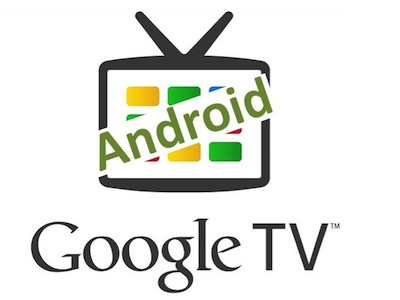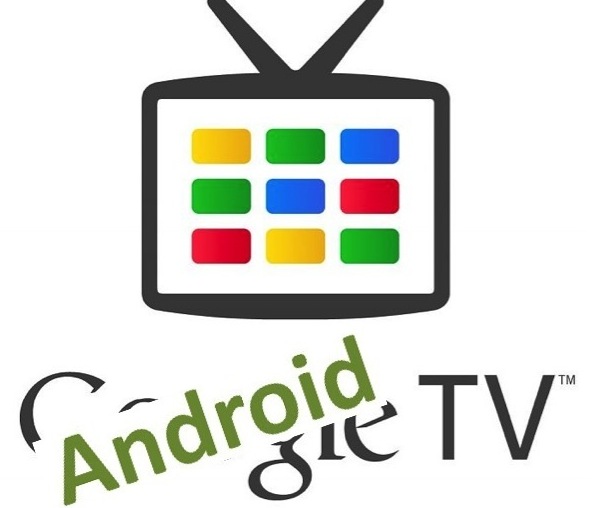Will Android TV Improve or Just Confuse Your Viewing?
Google is expected to rebrand its TV operating system from Google TV to Android TV. Will it provide a more intuitive service along the way?


To the scrap heap of tech failures such as the Apple Cube, Microsoft Kin, HD-DVD and Betamax, we can add Google TV. That was true even before a report by tech blog GigaOm revealed that Google will change the name of its flagging Internet TV platform to "Android TV."
Google TV is a case study of how not to integrate TV and the Internet. The software premiered on Sony products in 2010 — the company offered both TVs and a set-top box that integrated access to DISH satellite TV. Later, Google TV came to a pricey set-top box (with a giant keyboard) from Logitech and eventually to a few other TV makers, such as LG.
MORE: 10 Worst Tech PR Stunts of All Time
The idea was good: Google TV provided a single interface and universal search for accessing both cable or satellite TV as well as a wide array of online video services — not only Netflix and Amazon, but anything that could be viewed online. That included Google-owned YouTube, of course, but also sites like CBS.com and Fox.com — until the networks blocked Google TV. Google hadn't bothered to discuss its TV strategy with the channels.
Google also didn't communicate well with customers, said John Buffone, an analyst who covers video devices for research firm NPD. "There was very little consumer marketing promotion and advertising around the platform," Buffone told Tom's Guide. Nor did Google help its partners such as Sony or Logitech get the message out.
But the design was Google TV's real undoing. Eschewing the popular minimalist ethos embodied in its spare white home page, Google festooned its TV operating system with seven different screens to organize apps, shortcuts and who knows what else. The truly comical aspect was the Sony remote — a two-handed button-encrusted box that had a size, shape and appearance eerily reminiscent of an old-fashioned label-maker.
The flop of connected TVs
While connected TVs continue to gain popularity, Google TV-equipped sets barely made a dent. In a survey of Internet-connected households in the second quarter of 2013 by NPD, 40 percent of homes reported having a TV connected to the Internet, but just 2.5 percent of respondents said they had used Google TV.
Sign up to get the BEST of Tom's Guide direct to your inbox.
Get instant access to breaking news, the hottest reviews, great deals and helpful tips.
"They're just not buying it." Buffone said. "Comparatively, [Google TV usage] is quite low," (In all fairness, the Internet connection on a TV is the least popular way people connect their sets — way behind game consoles, which are most popular, then connected Blu-ray players and then set-top boxes such as Roku.)
MORE: Best Online Video Exclusives on Netflix, Hulu, Amazon and Yahoo
The name "Android TV" may sound like a bigger change than it is. Google TV has always run on the Android operating system; Google just didn’t advertise it.
But with the move to Android TV, Google is likely to update the OS to its latest version, making it easier for developers to write apps for it. Buffone also expects TV makers to take charge of how the service looks and works.
"In the past, Google had requirements for development, such as having a full keyboard available," Buffone said. "There's [rumors] that they might remove those restrictions." If so, Buffone thinks it will allow the TV makers freedom to design their own interfaces.
At the same time, Android could provide the same benefit it has to smartphone and tablet makers — a common platform that (for the most part) supports the same apps on many devices. Compared with other smart TVs, such as Samsung's, that have their own operating systems and require custom apps, Android could make it a lot easier and more appealing for creative app programmers to come up with better ideas for how to organize video and use a TV than any one company can.
And as smartphones have proved, the best app and interface ideas come not from monolithic companies, but from the wisdom of crowds — crowds of clever coders.
Follow Sean Captain @seancaptain and on Google+. Follow us @tomsguide, on Facebook and on Google+.
Sean Captain is a freelance technology and science writer, editor and photographer. At Tom's Guide, he has reviewed cameras, including most of Sony's Alpha A6000-series mirrorless cameras, as well as other photography-related content. He has also written for Fast Company, The New York Times, The Wall Street Journal, and Wired.
-
tolham "The idea was good: Google TV provided a single interface and universal search for accessing both cable or satellite TV as well as a wide array of online video services — not only Netflix and Amazon, but anything that could be viewed online. "Reply
people already have this capability with their game console or roku box....and now the chromecast.
"Google is likely to update the OS to its latest version, making it easier for developers to write apps for it."
this seems like oversaturation to me. we have consoles (including the up coming steambox), even the chromecast (which will have its own apps eventually), roku, ouya, smartphones, tablets, laptops and computers to run apps. what can using android with a TV remote offer consumers that we don't already have?
"Android could make it a lot easier and more appealing for creative app programmers to come up with better ideas for how to organize video and use a TV than any one company can"
google, you already did this chromecast. -
LelaRRay my best friend's aunt makes <$85> an hour on the computer. She has been laid off for ten months but last month her paycheck was <$18433> just working on the computer for a few hours. this contentReply
======================
WWW.Works23.COM
====================== -
BarryDennis AnyThing, AnyTime, AnyWhere. The "writing" is on thwe wall. Internet WILL be the dominant delivery platform for Entertainment, Education, Health Care; you name it. That Google hasn't taken a longer view of Android's potential in the unified marketplace is disappointing. Here's hoping that they will understand that structuring the right platform and open-sourcing the software will give them the best chance of dominating the infrastructure. Content? Well, that's another story. Straddling the fence between Content and Infrastructure-the pipeline-will only last until the FCC and FTC recognize the relity of the marketplace, and force the separation of Content and Infrastructure.Reply
